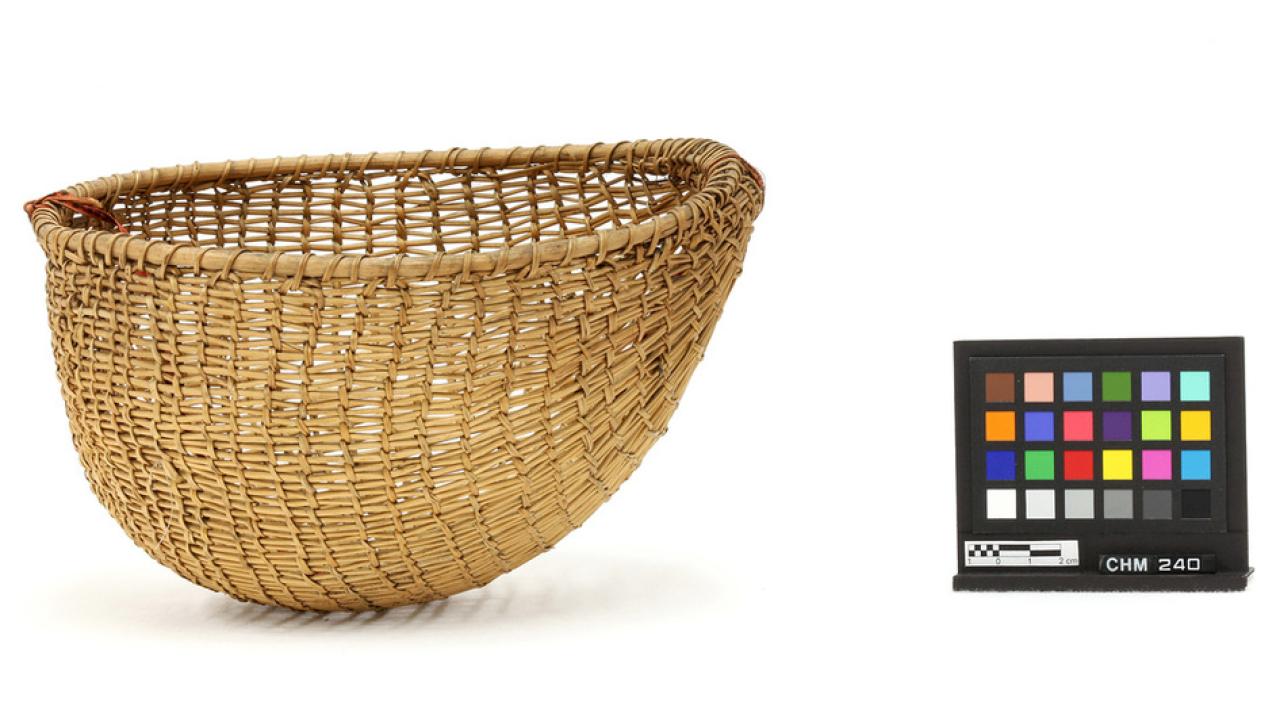
August 6, 2015: Southern Sierra Miwok Too-poo-lah
This exquisite Southern Sierra Miwok basket was purchased by C. Hart Merriam September 19, 1902 at a Chowchilla camp in Chowchilla Canyon from the woman who made it.
Merriam, one of California's leading ethnographers, was deeply interested in preserving the native languages of California during the early part of the twentieth century. In addition to recording extensive vocabularies, he made an effort to learn and record the native words for the baskets he purchased or was given by the people he had met.
In Merriam's own words:
The "too-poo-lah [is a] sieve or filter for making manzanita cider (e-soo-tak). It is filled with broken manzanita berries (a-yeh), wetted, [and] suspended from a limb by a cord or thong. The broken berries are then sprinkled with water by the fingers until a sufficient quantity of clear delicious cider has filtered through." In 1902, the Chowchilla camp visited by Merriam, was "headquarters for the round deep scoop of openwork called too-poo-lah."
This basket exhibits a distinctive deep-scoop shape unique to the Southern Sierra Miwok culture. During construction of this basket, the weaver alternated her workface, switching between the interior and exterior of the basket with each new weft row. This is a technique commonly used in construction of twined open-work baskets such as these as well as the fine circular winnowers, het' al', we see throughout California.
The start of this basket is a fan-shaped start with a twined mat above it. At the center of the mat is a diamond pattern beautifully woven with commercial string in a bound weave. The basket is diagonally twined with a slant of weft that is up to the right.
The rim finish is formed by gathering the warps into transverse bundles and lashing them down with the weft material. Although much stronger than they appear, these baskets tend to take a beating. A reinforcing rod secured to the rim helps to maintain the basket's shape and integrity during use. There is also a handle of commercial cloth attached to the basket start, intended to aid in hanging. To complete the basket, the weaver carefully concealed the end of the last weft row in the warp bundle, an example of the exquisite craftsmanship and meticulous skill of Southern Sierra Miwok basketry weavers.
Special thanks to Peter Crook, long-time Museum volunteer and Merriam enthusiast, for the transcription of the above passage of C. Hart Merriam's journal. Unfortunately, as many have learned, Merriam's handwriting was not the most legible. He was, after all, a medically trained doctor. We appreciate the men and women who volunteer their time to make Merriam's writings more accessible to others. Thank you Peter!
Want to learn more about the basketry terminology used above and how to identify and analyze ethnographic basketry yourself? Keep on the lookout for our upcoming course, ANT 186A: Museum Studies-Analysis of Native American Basketry, Spring quarter 2016, where you will have the rare opportunity to work with California basketry scholar Ralph Shanks!